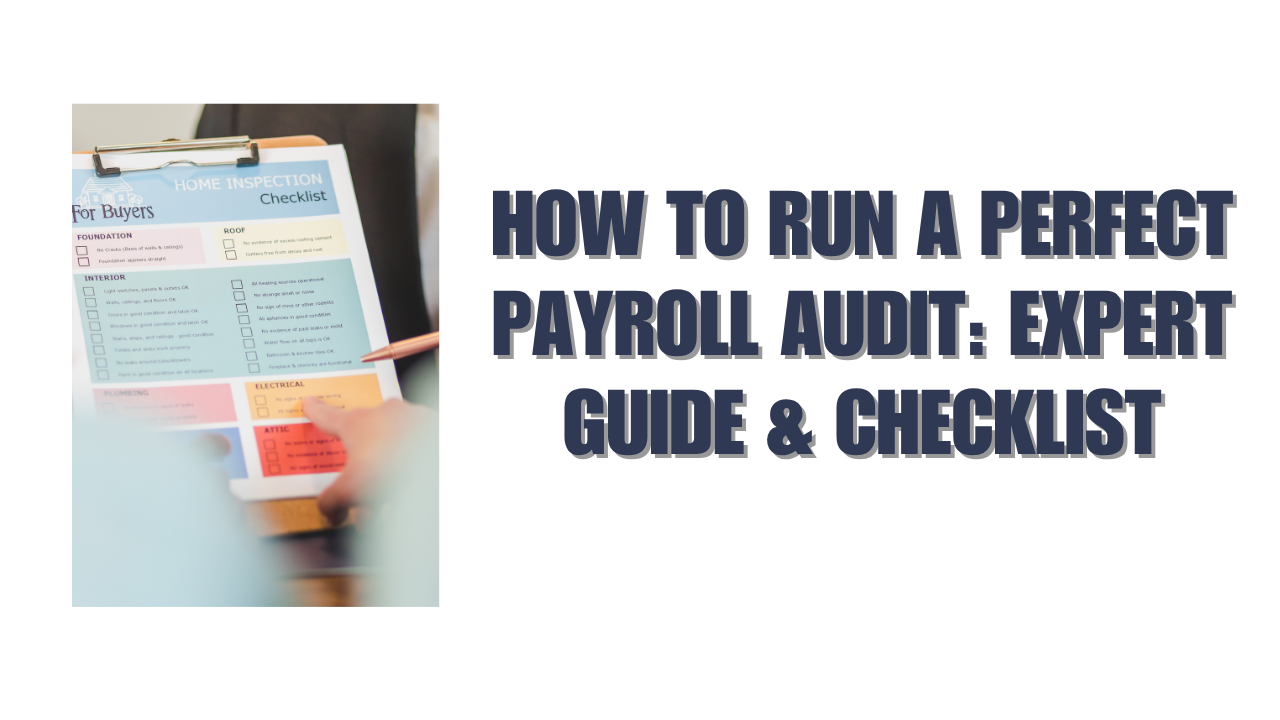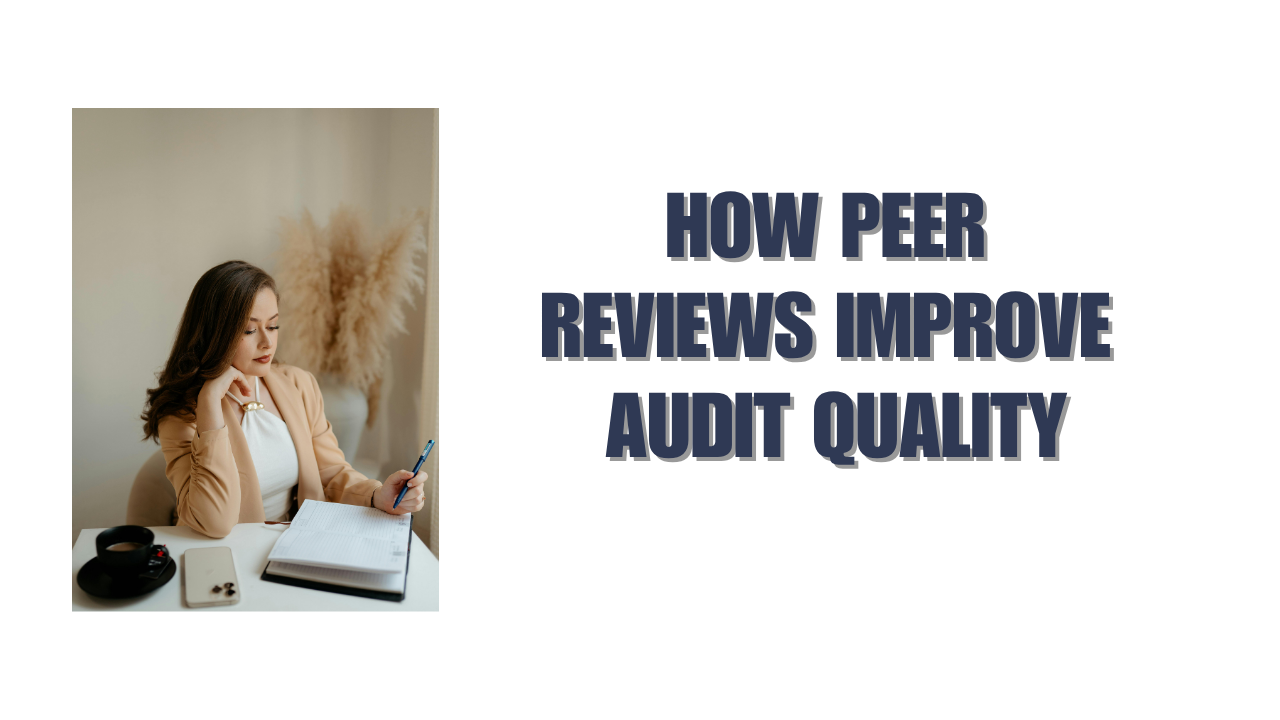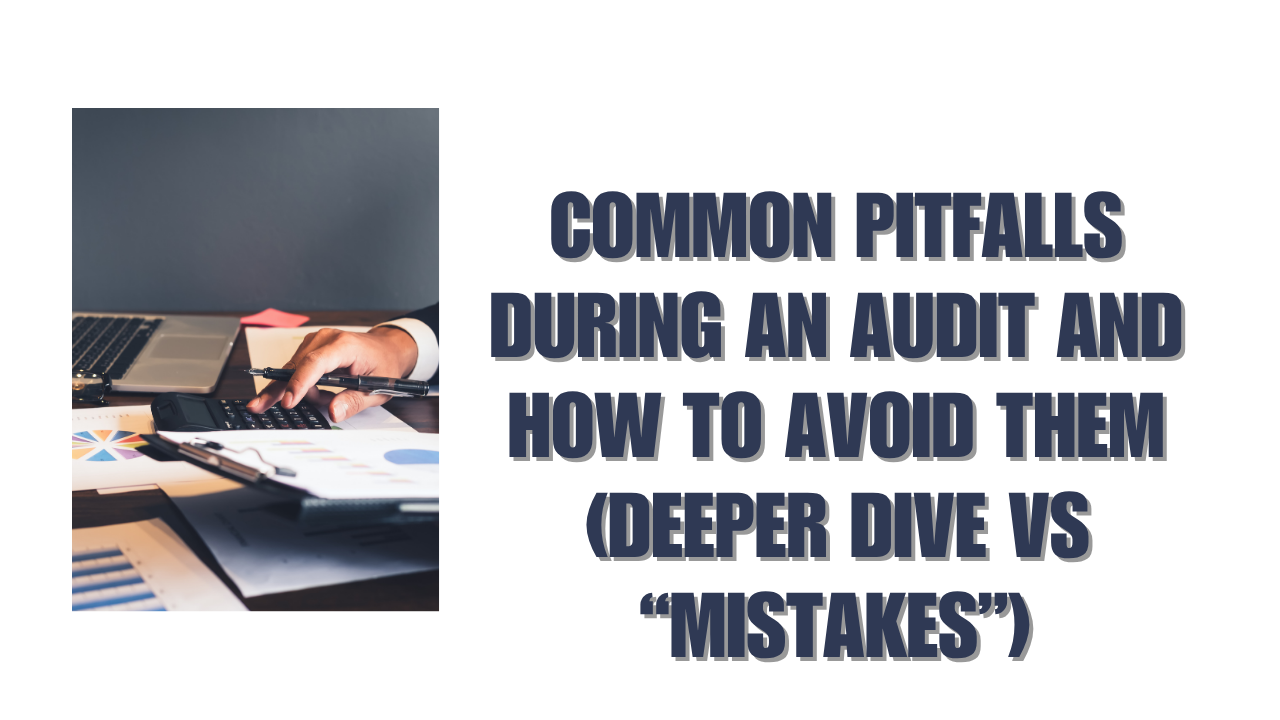One out of every four employees have gotten a paycheck with mistakes. This is a big deal as it means that payroll makes up over half of many organizations’ total expenses. These aren’t just annoying errors – they could devastate your business.
Payroll problems affect nearly 55% of American workers and create compliance risks that can get pricey. The stakes are high – 49% of employees start job hunting after just two payroll mistakes. Just two errors could make your team walk away.
Mistakes with payroll happen, but you can prevent them. A basic audit could save you from turning a normal payroll run into a cash crisis. Most companies find these errors only during payroll audits, which suggests many businesses have hidden mistakes in their systems right now.
Your company could face serious issues. These range from wrong employee classifications that might cost you three years of unpaid overtime to payroll fraud where terminated employees still receive checks. A well-planned audit process helps protect against all these risks.
In this piece, we’ll show you step-by-step how to do a payroll audit that catches problems before they become expensive mistakes. We’ve included everything from core procedures to practical checklists to help you keep your payroll accurate, compliant, and error-free.
What is a Payroll Audit and Why It Matters
A payroll audit systematically gets into your company’s payroll processes, data, and systems to verify their accuracy and compliance with regulations. Regular payroll processing differs from a detailed payroll audit that analyzes everything from employee classifications to tax withholdings. This ensures your payment systems work correctly and legally.
Definition and purpose of a payroll audit
Your company’s payroll processes need a really good review to ensure accuracy in calculations, proper tax withholdings, and compliance with employment laws. The main goal is to find discrepancies in wage calculations, verify hours worked, confirm pay rates, and get into tax withholdings. This systematic evaluation helps find errors or suspicious activities that might go unnoticed.
Payroll audits serve multiple vital purposes:
- Verifying that employees receive proper compensation
- Ensuring tax withholdings and payments are correctly processed
- Detecting unauthorized payments or ghost employees
- Confirming benefit deductions are accurately applied
- Checking employment status of all listed workers
Companies maintain a payroll accuracy rate of about 80.15%, and each error gets pricey at approximately $496.33 to fix. These numbers show why regular audits are significant for organizational health. On top of that, payroll audits help fix historical errors that could multiply over time.
How audits support compliance and accuracy
Regulatory compliance and financial accuracy improve through several audit mechanisms. We arranged our focus on keeping up with constantly evolving employment regulations. Companies can assess how well they follow wage and hour laws, tax requirements, and reporting standards through proper auditing.
Regular audits protect organizations by finding errors before they become expensive problems. Each payroll error can cost hundreds of dollars, potentially leading to thousands lost annually through recurring mistakes. Regular audits help verify that payroll expenses match actual employee records and payments follow company policies.
The compliance benefits cover specific areas:
- Tax accuracy – Audits show whether you’re deducting correct income tax amounts from employee paychecks, allowing fixes before the IRS finds non-compliance
- Employee classification – Proper audits help identify wrong classifications between employees and contractors that could cause tax errors and penalties
- Benefits administration – Audits verify appropriate deductions for enrolled employees and confirm opted-out employees aren’t charged
Payroll audits encourage employee satisfaction and trust beyond preventing penalties. Accurate, timely compensation shows steadfast dedication to fair employment practices and prevents staff disengagement from workers who feel underpaid.
Common triggers for payroll audits
Several specific events typically trigger payroll examinations, though proactive regular audits work best. Understanding these catalysts helps companies prepare for potential scrutiny.
Employee complaints often start audits. Workers who receive incorrect pay or notice compensation issues may prompt a formal review. Government agencies might also require examination of payroll practices.
Other common triggers include:
- Business expansion into new jurisdictions requiring new tax registrations
- Implementation of new payroll or timekeeping systems
- Significant changes to compensation structures or benefits
- Discovery of potential fraud or improper payments
- Mergers or acquisitions with workforce integration
External factors like labor union agreements or industry-specific compliance changes may require audits in some industries. Complex payroll oversight becomes necessary as organizations grow larger.
Some audits come from reactive situations. Labor inspectors may conduct formal reviews following complaints from current or former employees. These inspectors can enter business premises, interview employees, and just need wage and time records.
Regular payroll audits create protection against errors, whatever triggered them. Experts suggest audits at least annually, though quarterly reviews offer better protection against compounding mistakes. Regular examinations pay off through improved accuracy, better compliance, and stronger employee trust.
Types of Payroll Audits You Should Know
Payroll audits come in several forms. Each type plays a unique role in your organization’s financial health. You need to know these different types to prepare well, whether you start one yourself or respond to an external request.
Internal audits
Internal payroll audits show a proactive approach to keeping payroll processes accurate. Your HR department, finance team, or operations staff usually handle these reviews. Small businesses without dedicated teams can hire third-party consultants to do this work.
The main goal is simple: find and fix errors before they become big issues. These reviews work like maintenance checks for your payroll system and help you spot problems early.
Key characteristics of internal audits include:
- Regular checks (monthly, quarterly, or yearly) as part of standard controls
- Direct reporting to management and board of directors
- A focus on making operations better and improving processes
- Finding weak points in current systems
- Better internal processes before outside reviews
Companies get real value from internal audits through ongoing improvements. Looking at payroll data and processes helps boost accuracy and makes everything work better. Regular reviews create a culture of improvement rather than crisis management.
External audits
External audits give you an independent look at your payroll practices. Third-party auditors with no connection to your organization do these reviews. This independence gives you an unbiased look at your financial records.
These audits serve two main purposes. They check if your financial statements are accurate and make sure you follow accounting standards, tax rules, and labor laws. Having an outside perspective adds trust to your financial reporting.
What makes external audits different:
- Independent accounting firms or audit agencies do the work
- Yearly reviews are common, but special events can trigger them
- Stakeholders, investors, and regulators see the results
- You get honest opinions about accuracy and compliance
- Independent verification builds trust
Outside auditors look at your finances with fresh eyes. They often catch mistakes that internal teams might miss. This outside point of view teaches you more than just compliance – it shows you ways to work better.
Government audits
Government audits are different. Nobody chooses these – they happen when regulators want to check if you follow laws and rules. These reviews are mandatory once they start.
Different government agencies look at different things:
- Internal Revenue Service (IRS): Checks tax compliance and proper federal tax withholding
- Department of Labor (DOL): Makes sure wage and hour laws work right, including overtime pay
- State Labor Departments: Check if you follow state rules that might differ from federal ones
Labor inspectors have a lot of power during investigations. They can walk into your business anytime, talk to employees, and ask for wage records. You might face penalties if you can’t show the documents they want.
These audits often start because employees or former employees complain. Companies that check their work regularly through internal audits usually do better in government reviews. They’ve already found and fixed many possible problems.
Knowing these three audit types helps you prepare for each one. Regular internal checks often make external and government audits go smoother. This creates a cycle of compliance and accuracy in your payroll processes.
Step-by-Step Payroll Audit Procedures
A systematic payroll audit helps catch errors and maintain compliance. Each step works as a checkpoint to make sure your payroll system runs smoothly. Here’s a breakdown of the key procedures that are the foundations of a good payroll audit.
1. Review employee data and classifications
Start your payroll audit by getting into employee records to make sure all information stays current and accurate. This key first step confirms that only active employees get paid and their compensation lines up with their offer letters or recent changes like raises. You should also check that employee classifications (exempt vs. nonexempt, employee vs. contractor) are correct, as misclassification ranks among the most common issues the Department of Labor breaks down.
Your HR records should match your payroll data. New hires need to show up correctly in the system while terminated employees should no longer receive pay. This check helps spot potential “ghost employees”, a common payroll fraud risk where non-existent workers receive payments.
2. Verify hours worked and pay rates
The next step is to examine time and attendance records against payroll data. Match the number of hours employees worked with their time records, pay rates, and total earnings. For hourly workers, make sure timesheets show actual work periods and these numbers match the amounts paid.
Similar time cards across multiple employees often point to potential time theft or buddy punching, which needs more investigation. The hourly rates should match contractual agreements and any recent changes should be properly updated across your systems.
3. Check variable and atypical payments
After you confirm regular pay, look at all variable and atypical employee payments. These include overtime pay, bonuses, tips, commissions, change differentials, and reimbursements. Pay close attention to overtime calculations – non-exempt employees should receive the legally required rate (usually time-and-a-half) for hours over 40 per week.
Other variable payments to check include:
- Signing bonuses and relocation assistance
- Back pay and previous corrections
- Expense reimbursements processed through payroll
- Vacation pay and other paid time off
Clear labels for different payment types help track accuracy and show compliance with applicable laws.
4. Confirm tax withholdings and deductions
Take a close look at all tax withholdings and other payroll deductions. Make sure income taxes, Social Security, Medicare, and any state or local taxes are calculated correctly based on current rules and employee W-4 forms.
Check benefit deductions like health insurance premiums, retirement contributions, and flexible spending accounts against enrollment records. Note that rules and personal circumstances change often, so this check becomes especially important after employee life events or regulatory updates.
5. Settle payroll with bank and ledger
Your payroll records should match bank statements and your general ledger to ensure all financial systems agree. This process confirms that payroll expenses in your accounting system match actual payments from your bank account.
Make sure all direct deposit requests have proper documentation and authorization. Look for duplicate payments, uncashed checks, or failed direct deposits that might show process failures or potential fraud. This cross-check helps maintain financial accuracy across your organization.
6. Document findings and discrepancies
The final step is to document all audit findings, discrepancies, and corrective actions carefully. Keep detailed records of issues you find and solutions you put in place to create a clear audit trail. These records help with future audits and show compliance during external reviews.
Share key findings with HR and financial leaders. Then create action plans to fix any system-wide issues the audit reveals. Good documentation turns your audit from a simple compliance task into a valuable tool that improves your organization’s payroll processes.
Common Payroll Issues Found During Audits
Payroll audits often reveal common problems that can affect your business operations and compliance by a lot. You can prevent pricey penalties and keep your payroll system’s integrity intact by spotting these issues early.
Misclassified employees
Worker misclassification is one of the costliest mistakes businesses make, especially when you have global operations. The U.S. Department of Labor discovered that between 10% and 30% of audited employers got worker classifications wrong, and up to 95% of these workers became reclassified as employees after review. This mistake shows up in several ways:
- Non-exempt employees tagged as exempt to avoid overtime pay
- Workers labeled as independent contractors instead of employees
- Wrong exemption status based on job titles rather than actual work duties
Incorrect overtime calculations
Many companies calculate overtime using just base hourly rates. They forget to add non-discretionary bonuses or commissions to the “regular rate of pay”. Companies also fail to track all work hours, including time spent on work emails or calls outside regular hours.
Many businesses think all salaried employees don’t need overtime pay. This mistake can get pricey since salaried non-exempt employees should receive overtime based on their regular hourly rate.
Duplicate or ghost payments
Ghost employee schemes happen when weak payroll controls let people steal company money. Fraudsters either create fake workers or keep paying people who’ve left. The numbers can be shocking – a 2016 federal audit in Nigeria found 23,000 ghost workers taking NZD 19.61 million every month.
Duplicate payments happen through various tricks, like slightly changing duplicate invoices to fool accounts payable systems. These mistakes create big headaches for employers and employees alike.
Red flags for ghost employees or duplicate payments include repeated bank account numbers, names, addresses, or phone numbers in your payroll records.
Late or missing tax filings
Missing deadlines is a common payroll mistake that brings penalties and compliance problems. The late filing penalty for employment information can reach NZD 426.40 in some places – one penalty per month no matter how many times you miss filing.
Tax deduction errors usually happen because of old tax tables, wrong employee classifications, or missed changes in employee tax status. Employers filing by paper when required to file electronically face a penalty each month equal to the greater of NZD 250 or NZD 1 per employee.
Companies need to stay on top of tax filings and submissions. These penalties add up fast, particularly if you work across different regions with their own rules.
Best Practices for Running a Smooth Payroll Audit
Your payroll audit can become a strategic advantage instead of just another task. The right practices will prevent errors and create a strong payroll system.
Separate HR and payroll duties
HR and payroll departments need distinct responsibilities to create checks and balances that prevent internal fraud. We divided these roles to stop any individual from controlling the entire payroll process. To cite an instance, one manager oversees time-tracking while another handles payroll transactions. This division adds transparency to your payroll operations.
Studies show that keeping payroll and HR separate lets each team excel at their core tasks. The payroll team focuses on accuracy while HR handles talent management and employee relations. Both departments work better and keep an eye on each other’s responsibilities.
Use a consistent audit format
A standard format for your audit reports makes progress tracking easier. Detailed checklists help maintain consistency even with different team members conducting audits. The standardized format helps you:
- Compare results between different audit periods
- Spot trends and recurring issues faster
- Maintain consistent documentation to comply
- Create a clear reference point to fix issues
You should document procedures in a manual that outlines review items, responsibilities, and ways to handle discrepancies. This documentation helps train new staff and proves compliance during external reviews.
Train staff on audit procedures
Your payroll team needs regular training to stay current with regulations and best practices. Professional development should include technical skills and compliance knowledge, especially for teams that handle complex payroll systems.
Software handles many calculations, but human oversight remains vital. Staff members who understand audit procedures can spot patterns that automated systems miss. A maker-checker process where different people prepare and review payroll data stops errors before they reach employees.
Schedule audits regularly
A consistent audit calendar with quarterly internal reviews and annual complete audits helps maintain compliance. Regular schedules let you fix issues quickly instead of letting them pile up.
Experts suggest quarterly internal reviews with deeper annual audits. This schedule provides enough oversight without overwhelming your team. The frequency might change based on your organization’s size, but a regular schedule works nowhere near as well as random checks.
Tools and Software to Simplify Payroll Audits
Technology can transform tedious payroll audits into quick and accurate processes. The right software and structured resources help you catch errors fast and keep your organization compliant.
Payroll software with audit features
Today’s payroll systems come with powerful audit capabilities that cut down manual work significantly. Built-in audit trails track every system action and create detailed logs of changes and approvals. You’ll always know who approved what and when this tracking gives clear accountability during investigations.
We used these platforms to automate calculations for pay, taxes, and deductions. This reduces human error and ensures tax law compliance. Advanced systems also send real-time compliance alerts about regulatory changes and upcoming deadlines.
Companies operating in multiple jurisdictions should choose software with multi-state tax support. The software calculates payroll taxes based on different state thresholds automatically. This feature becomes more valuable as your company grows.
Integrated accounting systems
A unified system that connects payroll with HR and accounting creates one source of truth for financial data. These platforms remove duplicate data entry and keep different functions consistent.
Central databases store combined financial information. Every department can access the same data immediately. Automated data flows between systems update changes throughout your financial ecosystem automatically.
Time tracking, payroll, and accounting integration helps the audit process create smooth reconciliation paths. System communication makes discrepancies obvious right away.
Checklists and templates
Well-laid-out audit checklists give you a system that covers everything during reviews. The Ultimate Payroll Audit Checklist works as your main reference to conduct internal audits and achieve compliance.
Making these checklists part of your quarterly routine helps you spot errors early. You’ll build a reliable payroll system. Being thorough will help you perform better audits that protect your business and support efficient payroll operations.
Conclusion
Perfect payroll audits help organizations maintain compliance and financial accuracy. This piece shows how systematic audit procedures protect businesses from errors that affect more than half of American workers. Regular payroll audits act as a shield against potential issues rather than fixing problems after they surface.
Payroll mistakes get pricey and erode employee trust. Many organizations find these errors only during formal audits. A consistent audit schedule with quarterly internal reviews provides oversight to catch discrepancies before they snowball into bigger problems.
These step-by-step procedures create a framework to audit your payroll systems properly. The separation of duties between HR and payroll departments creates vital checks and balances that prevent fraud and ensure accuracy. Standardized formats and well-trained staff make your audits more effective.
Employee misclassification, wrong overtime calculations, and ghost payments show why alertness matters. These problems happen often but structured audit processes can prevent them. The financial risks of these errors go way beyond simple corrections and lead to heavy penalties and damaged relationships with employees.
Modern payroll software’s built-in audit features simplify what was once a tedious manual process. Integrated accounting systems create a single source of truth across organizations. This makes discrepancies obvious during reconciliation.
Your organization’s financial health and employee satisfaction depend on payroll accuracy. Employees start looking for new jobs after just two payroll errors. Time invested in thorough payroll audits protects your business from compliance issues and shows your steadfast dedication to the team through accurate, on-time pay.
Put these audit procedures in place today and see your payroll accuracy improve while compliance risks decrease. Your business and employees will appreciate it.
FAQs
Q1. What is the purpose of a payroll audit?
A payroll audit systematically examines a company’s payroll processes, data, and systems to verify accuracy and compliance with regulations. It helps identify discrepancies in wage calculations, verify hours worked, confirm pay rates, and examine tax withholdings to ensure employees are properly compensated and the company remains compliant with labor laws.
Q2. How often should a company conduct payroll audits?
Experts recommend conducting internal payroll audits at least quarterly, with a more comprehensive annual audit. This frequency allows organizations to address issues promptly and maintain ongoing compliance. However, the exact schedule may vary based on the company’s size and complexity.
Q3. What are some common issues found during payroll audits?
Common issues discovered during payroll audits include employee misclassification (such as incorrectly categorizing workers as contractors), incorrect overtime calculations, duplicate or ghost payments, and late or missing tax filings. These problems can lead to significant financial penalties and compliance risks if left uncorrected.
Q4. How can businesses streamline their payroll audit process?
Businesses can streamline their payroll audit process by using payroll software with built-in audit features, implementing integrated accounting systems, and utilizing standardized checklists and templates. Additionally, separating HR and payroll duties, training staff on audit procedures, and scheduling regular audits can improve efficiency and accuracy.
Q5. What are the consequences of payroll errors for businesses?
Payroll errors can have serious consequences for businesses, including financial penalties, compliance issues, and damaged employee relationships. Studies show that 49% of employees will start looking for a new job after just two payroll errors. Moreover, companies may face substantial fines and back payments if errors like employee misclassification or incorrect overtime calculations are discovered during government audits.






